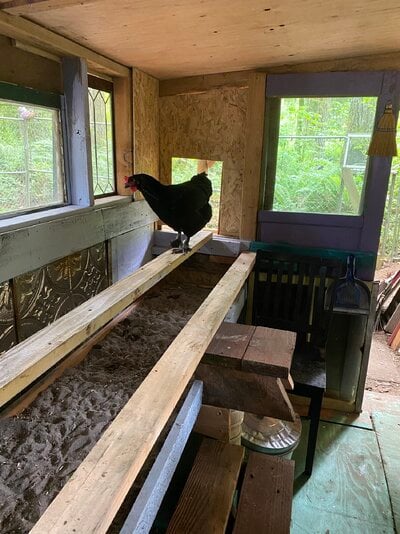I plan on building perches and drop board at the same height one 16 inches behind the other at a height of 32 inches and don't plan on a ladder for hens to climb to access perches. Is this a good idea? I currently have one 70 inch perch for six hens and am going to buy eight to replace the six and think the current perch is just too small. There will be 2 RI Reds, 2 Barred Rocks, 2 White Leghorns, and 2 Americanas. Am I correct to think the current perch is too small? I thought there'd be no competition for the higher perch and it certainly will make it easier to clean the drop board. Here's another option: What do you think of me adding another perch perpendicular to the current one to accommodate the two additional birds. My coop is 4' X 7' and the current perch is 16" deep so the new perpendicular perch would be 16" from the end of the current perch and about 27" long. I'd assume that at the corner of the two perches no one would sit at night. What do you think of this idea? Your feedback is appreciated.
Last edited:




